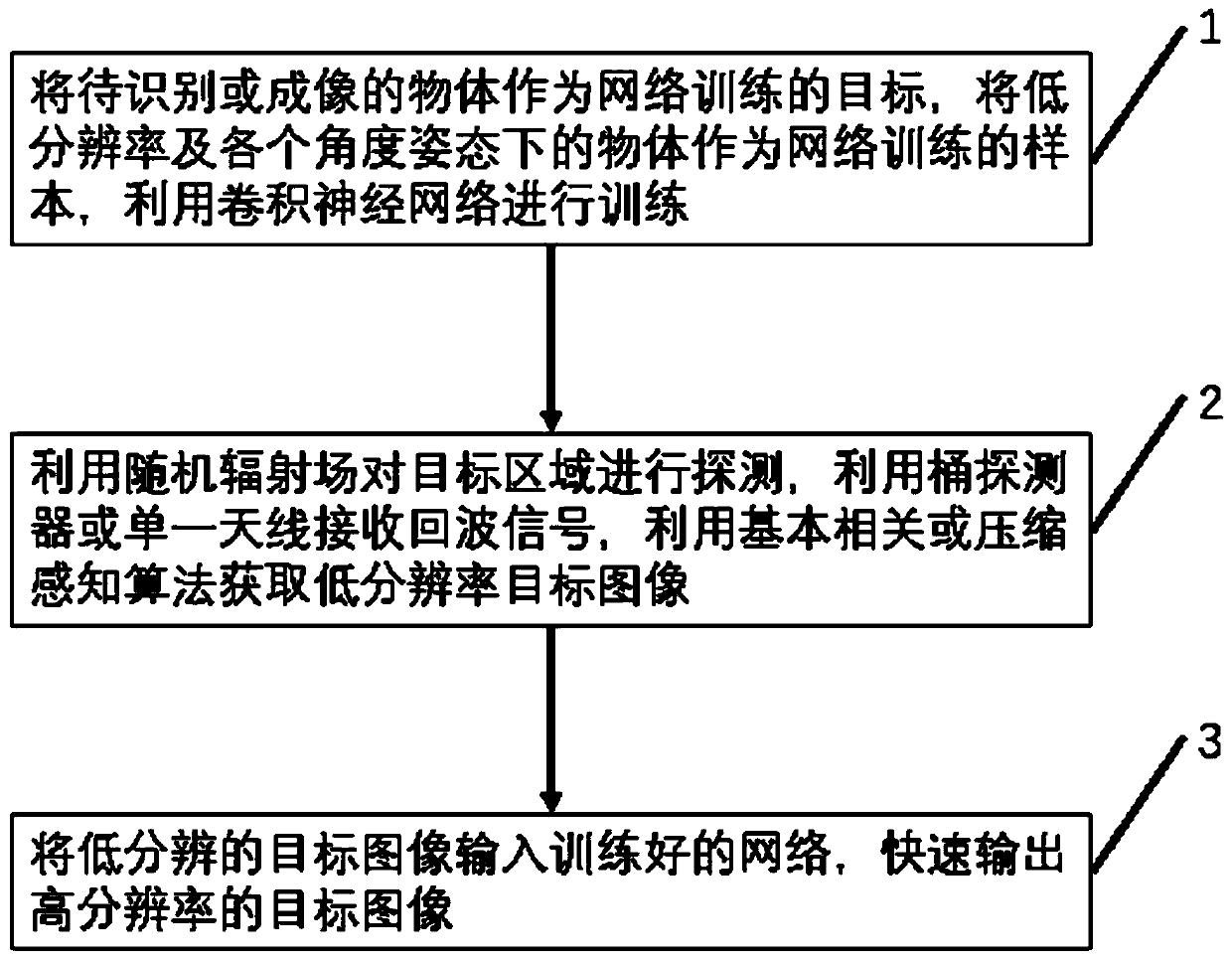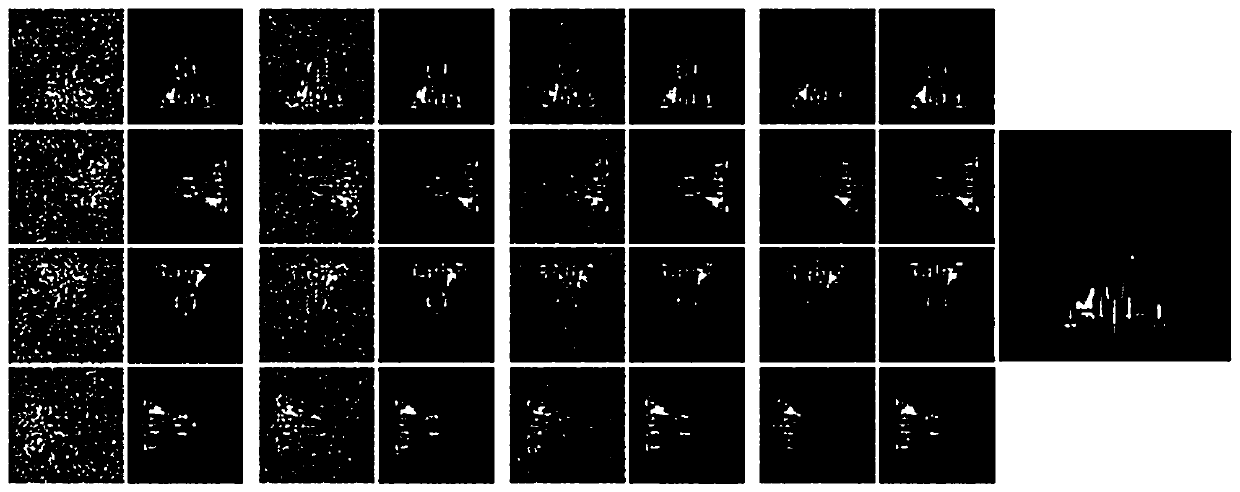Ghost imaging method based on convolutional neural network
A convolutional neural network and ghost imaging technology, applied in the field of ghost imaging, can solve the problems of sampling rate, calculation efficiency and imaging quality, etc., and achieve the effects of shortening data acquisition time, good anti-interference ability, and fast imaging speed
- Summary
- Abstract
- Description
- Claims
- Application Information
AI Technical Summary
Problems solved by technology
Method used
Image
Examples
Embodiment
[0046] The experimental target is a toy airplane model, the distance between the target and the light source is 27.5 cm, the distance between the target and the receiver is 45 cm, and the distance between the light source and the receiver is 17.5 cm. The power of the light source is 30μW / cm 2 , Continuously project random speckles with different sizes of 64*64 pixels, receive 300,000 echo signals, randomly select 200 samples for testing, and then randomly select 100 samples for testing. The network was trained at 20% sampling rate and tested at 5%, 10%, 15% and 20% sampling rate.
[0047] The experimental results are as figure 2 As shown, from left to right are the input and output comparison results at a sampling rate of 5%-20%, and the rightmost is the original image of the target taken with a CCD. It can be seen that regardless of the sampling rate, the quality of the output image has been greatly improved relative to the input image, and as the sampling rate increases, the ...
PUM
 Login to View More
Login to View More Abstract
Description
Claims
Application Information
 Login to View More
Login to View More - R&D
- Intellectual Property
- Life Sciences
- Materials
- Tech Scout
- Unparalleled Data Quality
- Higher Quality Content
- 60% Fewer Hallucinations
Browse by: Latest US Patents, China's latest patents, Technical Efficacy Thesaurus, Application Domain, Technology Topic, Popular Technical Reports.
© 2025 PatSnap. All rights reserved.Legal|Privacy policy|Modern Slavery Act Transparency Statement|Sitemap|About US| Contact US: help@patsnap.com



